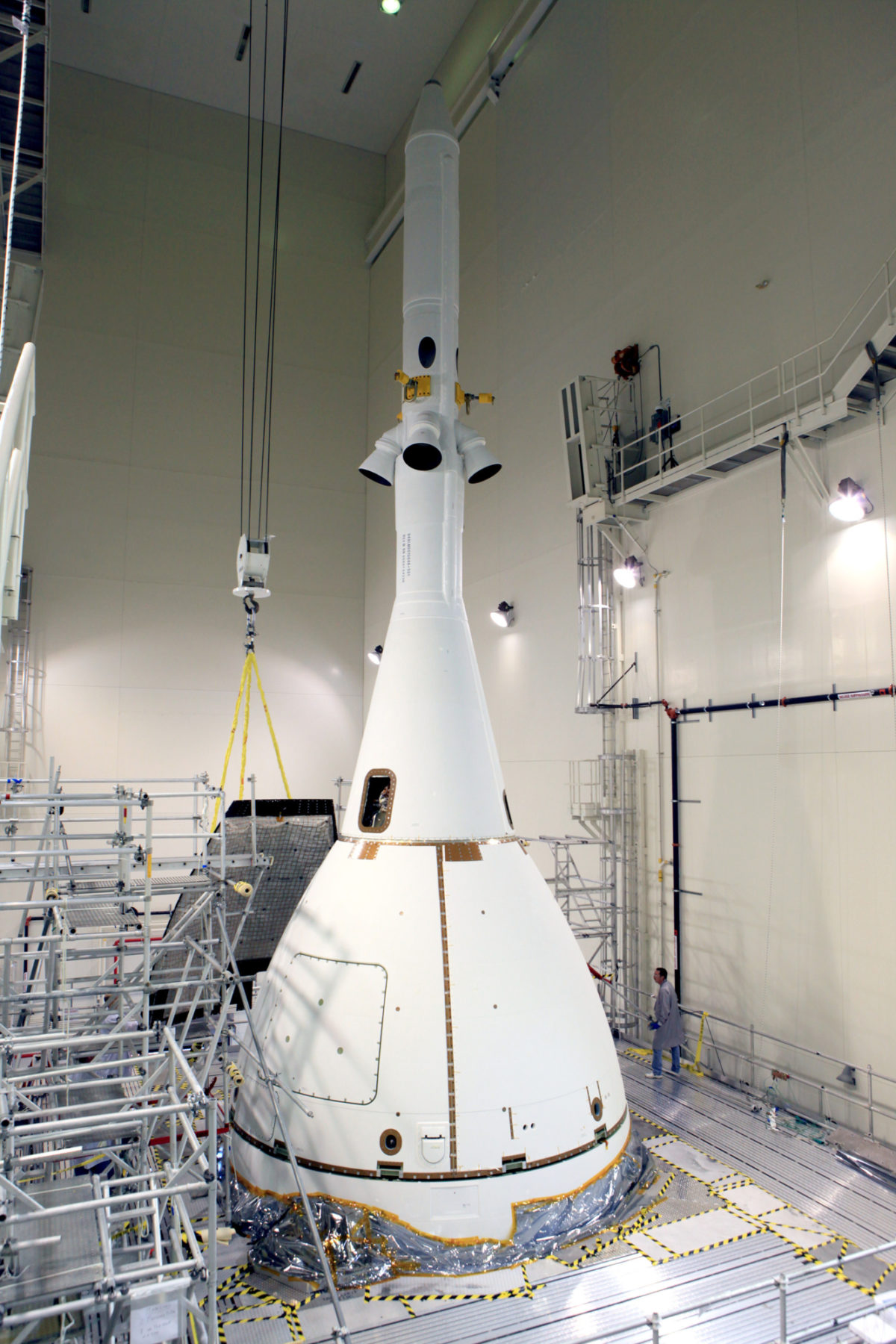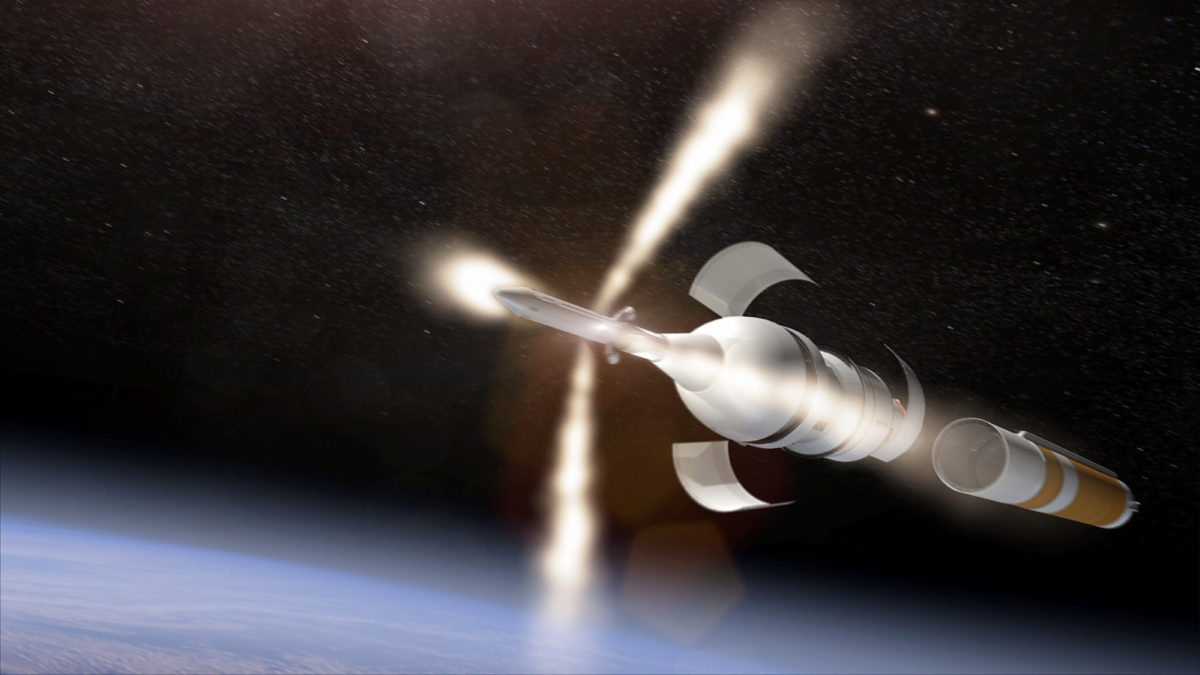Jason Davis • Oct 20, 2014
When Good Rockets Go Bad: Orion's Launch Abort System
One of the tricky parts of launching humans into space is deciding what to do if something goes wrong. No matter the launch vehicle, getting from the ground to orbit requires riding a controlled explosion for about nine minutes. It stands to reason that if the controlled explosion suddenly becomes uncontrolled—or stops altogether—it would be nice to have a backup plan.
On conventional rockets, where a capsule full of humans sits at the very tip of the launch vehicle, it makes sense to have a second controlled explosion at the ready that can pull the capsule away from whatever went wrong. This second rocket motor is usually built into a tower attached to the capsule, which, under normal launch conditions, gets thrown away once the capsule makes it through most of Earth's atmosphere. Future capsule designs by companies like SpaceX plan to forgo the tower and use thrusters built into the capsule. These thrusters could also be used to land the capsule in lieu of parachutes, which normally bring spacecraft home under both normal and abort scenarios.
NASA has a lot of experience with the tower system—it's been used on every American human spaceflight program except Gemini and the space shuttle. Gemini relied solely on ejection seats, but the shuttle's abort scenarios were altogether different beasts. They involved wild acrobatics that fortunately never had to be used, except for the time one of Challenger's main engines failed, and the shuttle hobbled into low-Earth orbit without much of a problem. The trouble with the shuttle's abort modes was highlighted in 1986, when Challenger's external fuel tank disintegrated, throwing the orbiter into the local airflow at forces way above design tolerances. It ripped apart, claiming the lives of seven astronauts. For the shuttle, there wasn't much you could do if the entire rocket stack suddenly fell apart around the orbiter.
So for Orion, NASA's new spacecraft, the capsule and tower system are back. Critics have questioned why NASA didn't try out next-generation abort systems like built-in thrusters or powered landings. They argue Orion is simply an Apollo redux—and that other NewSpace capsules are, as one prominent journalist once told me, "still f—ing capsules." But other considerations aside, capsules and launch abort towers are a safe bet for a government agency trying to please a long list of bureaucrats, politicians and industry leaders. Especially when Orion's end goal—humans on Mars—is far from a safe bet.
Orion's first test flight happens this December, when a Delta IV Heavy rocket will send the spacecraft on a two-orbit shakedown cruise. The spacecraft is currently sitting in the aptly-named Launch Abort System Facility, and won't roll out to the pad until November. At the LAS Facility, Orion's abort tower was gingerly installed by engineers wearing lab coats and hair nets. A hand-written sign taped to scaffolding around the capsule read "MAN LOAD, 2 Persons Total, 1 on Top Deck at a Time," serving as a reminder that people are the heart and soul of spacecraft engineering—a field that occasionally still uses Apollo-era terms like "man load."

The solid-fuel abort motor won't be active for Exploration Flight Test 1—if the Delta IV Heavy goes up in flames, so will Orion. The attitude control motor, which consists of eight gas generator-driven valves ringing the top of the LAS, won't be armed, either. The only functional rocket motor will be the jettison motor, which fires a few minutes into flight, pulling the LAS tower away from Orion, leaving the capsule exposed to space.
When actual astronauts go for a ride in Orion—by current timelines, at least seven years from now—they'll have the entire might of the LAS at their disposal. Should they need to abort, they'll be subjected to extreme forces. The launch abort motor provides 400,000 pounds of thrust, enough to accelerate the capsule from zero to 800 kilometers per hour in three seconds—and that's on top of whatever speed the launch vehicle is already going. The published numbers on how many Gs this produces varies, but it's somewhere north of 11. Eleven Gs are survivable, and the astronauts should stay cognizant enough to flip switches inside Orion while they travel a mile uphill and a mile downrange of whatever calamity is engulfing the Space Launch System, the rocket slated to carry Orion. Eleven Gs are easier to take when they push you back into your seat, as opposed to the opposite direction, where you have to start worrying abut your retinas detaching from the tissue inside your eyeballs.
Like Orion, the LAS was developed and built when NASA's human spaceflight program was still called Constellation, and the rocket system was called Ares. The first and only full test of the integrated capsule and abort system took place in May 2010. On that day, at New Mexico's White Sands Missile Range, Orion left the pad so fast that one of the video cameras trained on the pad hardly saw a thing, quickly panning upward into a trail of smoke, with a "TILT LIMIT" message flashing on the screen. Later high-frame video revealed the full magnificence of the test. As the capsule ascends, its attitude control motor fires continuously, keeping the stack upright. On its own, the LAS is aerodynamically unstable—it wants to flip 180 degrees. If you've ever chucked a dart fins-first at a dartboard, you've seen this effect in action—the dart immediately begins to reorient itself into the proper alignment. Providing you do this delicately enough, the dart will stick in the board tip-first, making you look like a carnival knife-throwing expert.
Orion Pad Abort 1 Highlights The first and only end-to-end test of Orion's Launch Abort System was conducted on May 6, 2010 at White Sands Missile Range in New Mexico.Video: NASA
When Orion reaches the apex of its abort flight, it is allowed to make its 180-degree flip. The capsule of astronauts, who have already realized they will not go to space today, experience a brief moment of weightlessness before the capsule starts falling back to Earth, heat shield down. The jettison motor fires, pulling the LAS away from Orion. At White Sands, the LAS landed back on the desert floor in a smoldering crater.
Orion, meanwhile, sheds its Forward Bay Cover, a ring at the top of the capsule protecting the parachutes. Two drogue chutes deploy, stabilizing the wobbling capsule. The drogues pull out Orion's three main chutes, no doubt eliciting a sigh of relief from the spacecraft's occupants. During the pad abort test, Orion came to a rest among some creosote bushes, hardly scathed from the fire and fury of the abort motors that engulfed it in smoke a couple minutes earlier.
If the LAS ever gets used with astronauts aboard, it will be for just the second time in the history of spaceflight. In 1983, two cosmonauts aboard a Soyuz capsule were safely pulled away from an exploding rocket, coming to rest on the Kazakhstan steppe a few kilometers downrange. Hopefully, the incident will continue to stand alone in the annals of human spaceflight. One of many compelling reasons for sending people to Mars is making humanity a multi-planet species. But the first step to is getting off Earth safely in the first place, and that starts with a good backup plan.

Let’s Go Beyond The Horizon
Every success in space exploration is the result of the community of space enthusiasts, like you, who believe it is important. You can help usher in the next great era of space exploration with your gift today.
Donate Today

 Explore Worlds
Explore Worlds Find Life
Find Life Defend Earth
Defend Earth

